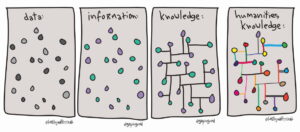
Digital tools increasingly permeate our world, supporting, enhancing, or replacing many of our day-to-day activities in archaeology as elsewhere. Many of these devices lay claim to being ‘smart’, even intelligent, though more often than not this has more to do with sleight of hand and invisible software functionality than any actual intelligence. As Ian Bogost has recently observed, the key characteristic of these so-called smart devices is not intelligence so much as online connectivity, the realisation of which brings with it external surveillance and data-gathering (Bogost 2022). Such perceptions of ‘smartness’ might also point to a tendency for us to overestimate the capabilities of digital tools while at the same time minimise their influence.
In this light, I came across an interesting quotation from an anonymous archaeologist cited in Smiljana Antonijević’s book Amongst Digital Humanists: An Ethnographic Study of Digital Knowledge Production who said:
In archaeology, digital technologies such as GIS applications, laser scanning, or databases have been used for decades, and they are as common as a trowel or any other archaeological tool. (Antonijević 2016, 49).


